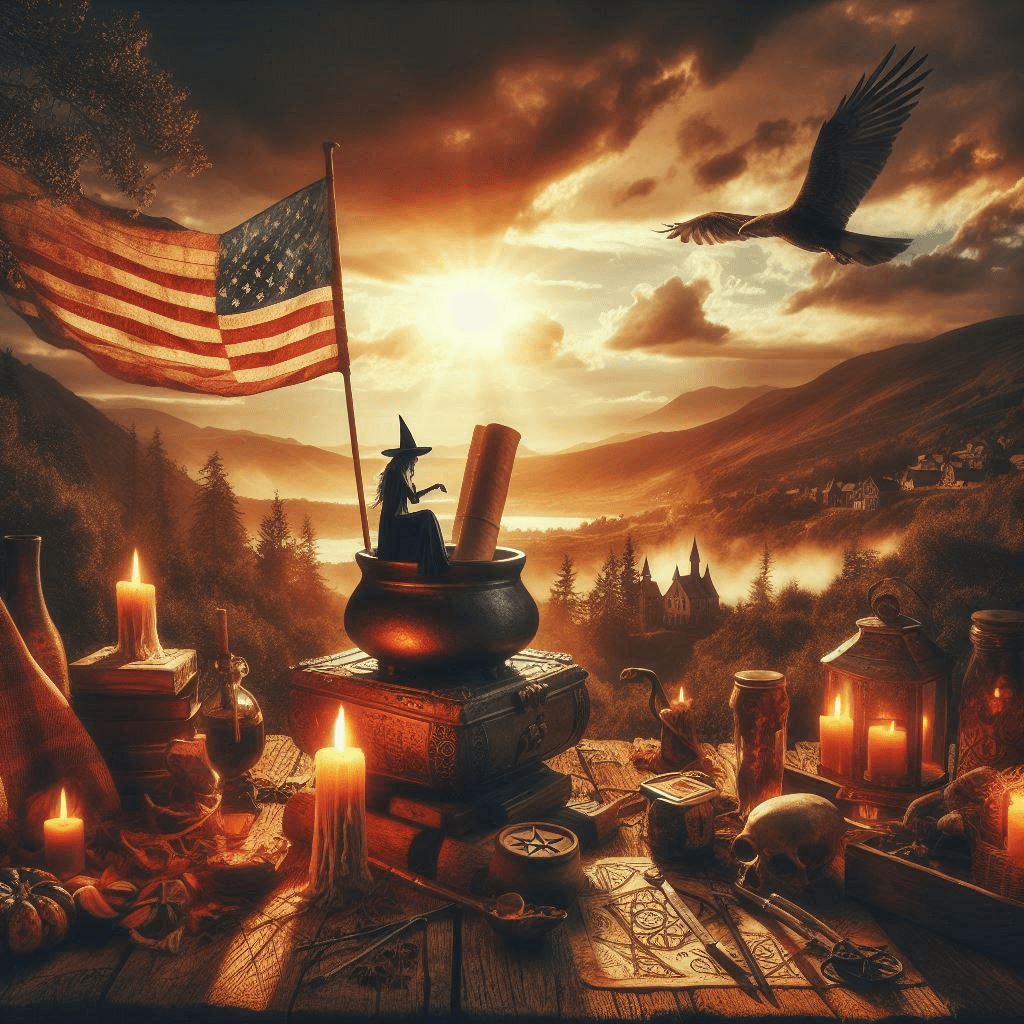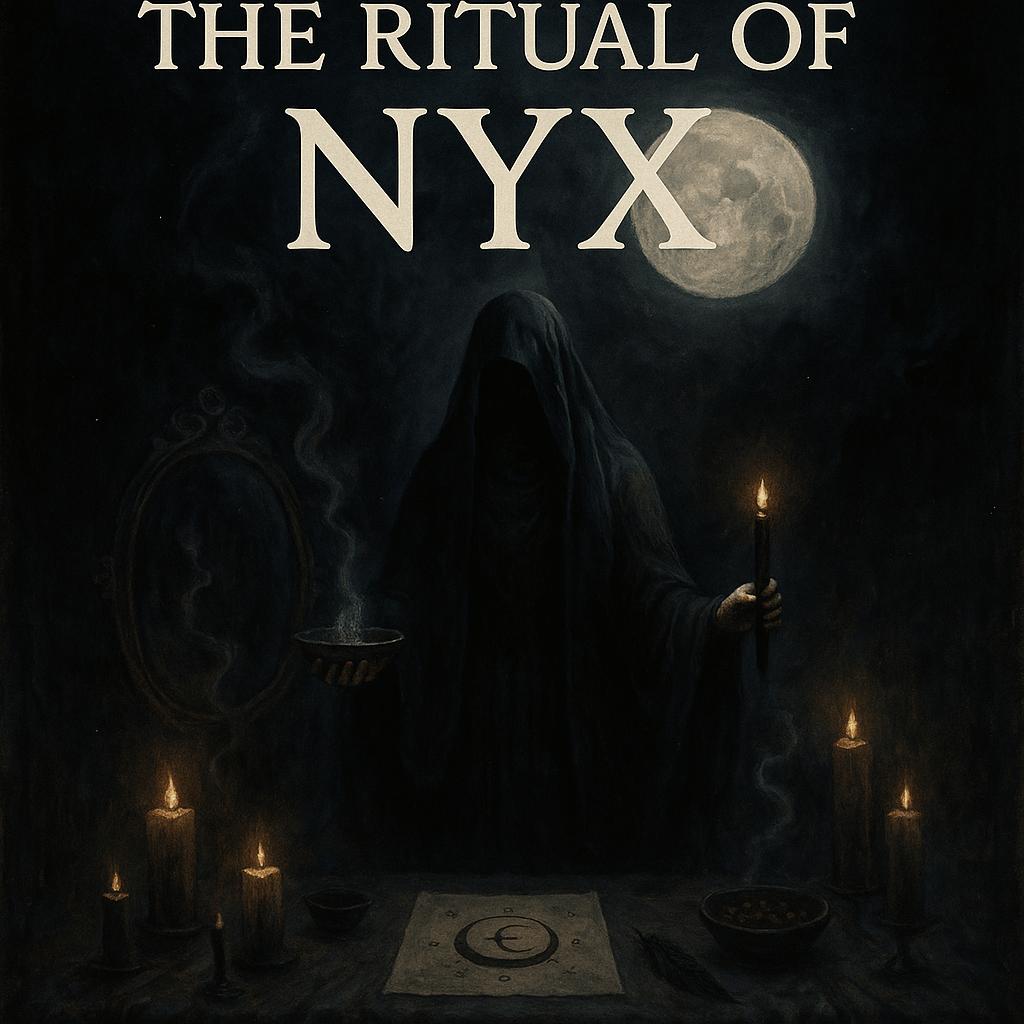Your cart is currently empty!

The Enigmatic History of Witchcraft in America: From Colonial Times to Modern Day
Witchcraft has long been a subject of fascination and fear, deeply rooted in America’s cultural and historical fabric. From the infamous Salem Witch Trials to the modern resurgence of neopagan practices, the history of witchcraft in America is a rich tapestry woven with threads of superstition, religion, and societal change. This entry delves into the enigmatic history of witchcraft in America, tracing its evolution from colonial times to the present day, and offering a comprehensive exploration of key events, societal shifts, and cultural practices.
Early Beginnings: Witchcraft in Colonial America
The concept of witchcraft arrived in America with European colonists, who brought with them a mix of fear, superstition, and religious fervor. In the 17th century, the Puritan colonies in New England were particularly susceptible to witchcraft hysteria. The most notorious example is the Salem Witch Trials of 1692, where over 200 people were accused of practicing witchcraft, and 20 were executed. These trials, which took place in Salem, Massachusetts, were driven by intense religious zeal, political tensions, and social anxieties.
The Salem Witch Trials began with the strange behavior of several young girls, including Betty Parris and Abigail Williams, who claimed to be afflicted by witches. Their accusations spiraled into a community-wide panic. Notable cases include Bridget Bishop, the first person executed during the trials, who was accused of bewitching her neighbors through spectral evidence—testimony about ghostly apparitions. Tituba, an enslaved woman of Indigenous or African descent, also played a central role; her confession under duress ignited further accusations and hysteria. Historians argue that these trials reflect the intersection of religious extremism, gender bias, and local disputes in colonial society.
Outside of Salem, accusations of witchcraft were not uncommon. In Hartford, Connecticut, the execution of Alse Young in 1647 marked the first recorded witch execution in the American colonies. Over the next several decades, fear of witchcraft led to trials and executions in other Puritan communities. Grace Sherwood, known as the “Witch of Pungo,” faced accusations in Virginia in 1706. Her trial by water, in which she was thrown into a river to determine her guilt, became a notable example of the era’s brutal methods.
Societal Factors Behind the Witch Hunts
The witch trials were not merely products of superstition but deeply intertwined with societal factors. In New England, the strict Puritan religious framework fostered a climate of fear and suspicion. The belief in predestination and the constant fear of the devil’s influence made witchcraft accusations a convenient means of explaining misfortunes, such as failed crops or illnesses.
Economic tensions also played a role. In Salem, for example, divisions between the more prosperous town residents and the rural villagers fueled animosities. Many of the accused were women who defied traditional gender roles, such as landowners, midwives, or widows, challenging the patriarchal norms of the time. The trials served as a mechanism for reinforcing social hierarchies and punishing those who deviated from accepted norms.
The Decline of Witch Trials and the Persistence of Belief
As the 18th century progressed, the Enlightenment ushered in a new emphasis on reason and scientific thought. The formal prosecution of witches declined significantly as legal standards for evidence became stricter and skepticism toward supernatural claims increased. However, beliefs in witchcraft and the supernatural persisted, particularly in rural areas.
Folk Magic and Superstition
In Pennsylvania, the Pennsylvania Dutch community practiced “powwowing,” a blend of Christian prayers and traditional European folk remedies. This practice reflected a unique syncretism of religious and magical beliefs. Similarly, settlers preserved old-world magical traditions in the Appalachian region, including herbalism, storytelling, and charms to ward off evil. These practices highlight the enduring role of folk magic in shaping rural American culture.
Influence of African and Indigenous Practices
African American communities developed spiritual practices that blended elements of Christianity with African traditions. Hoodoo, a form of folk magic practiced primarily in the Southern United States, included rituals and charms to bring good fortune, protect against harm, and communicate with ancestors. Rootwork and the use of spiritual supplies, such as mojo bags, became integral to Hoodoo’s practice, reflecting the resilience and adaptability of enslaved peoples and their descendants.
Indigenous American traditions also influenced colonial and later American practices. Native spiritual beliefs, which often centered on the interconnectedness of nature and spirit, found their way into settler practices through cultural exchange, despite efforts by European colonists to suppress Indigenous religions. For example, the use of smudging, a practice involving the burning of herbs for spiritual cleansing, has roots in Indigenous traditions but has been adopted in various forms by contemporary neopagans.
The 19th Century: Spiritualism and the Supernatural
The 19th century marked a significant shift in American attitudes toward the supernatural. The rise of the Spiritualist movement in the 1840s reflected a growing interest in communication with the dead and otherworldly phenomena. The movement was catalyzed by the Fox Sisters, who claimed to communicate with spirits through mysterious “rappings.” Their fame sparked a nationwide fascination with seances, mediums, and other forms of spirit communication.
Spiritualism as a Social Phenomenon
Spiritualism appealed to a diverse audience, including women and marginalized groups, offering a form of spiritual empowerment and a challenge to traditional religious authority. Figures like Mary Todd Lincoln, the wife of President Abraham Lincoln, participated in seances during the Civil War, seeking comfort after the death of her son. This period also saw the publication of numerous books and manuals on Spiritualist practices, further legitimizing the movement.
Witchcraft in Literature and Folklore
American literature and folklore during this era continued to explore themes of witchcraft and the supernatural. Nathaniel Hawthorne’s works, such as Young Goodman Brown, delved into the psychological and moral complexities of Puritanical beliefs. Meanwhile, legends like the Bell Witch of Tennessee—a supernatural entity said to torment the Bell family in the early 19th century—captured the imagination of rural communities and became enduring pieces of American folklore.
Modern Witchcraft: The Rise of Neopaganism
The mid-20th century brought a resurgence of interest in witchcraft, largely influenced by the neopagan movement. Wicca, a modern pagan religion founded by Gerald Gardner in the 1950s, gained popularity and helped reshape public perceptions of witchcraft. Gardner’s writings emphasized the worship of nature, seasonal cycles, and deities, drawing inspiration from ancient pagan traditions and ceremonial magic.
Feminist Witchcraft and the Counterculture Movement
The feminist movement of the 1970s and 1980s further transformed modern witchcraft. Feminist spirituality embraced witchcraft as a means of reclaiming female power and honoring the divine feminine. Starhawk’s book The Spiral Dance became a seminal text for feminist witches, promoting rituals that celebrated the earth and women’s empowerment. This period also saw the rise of ecological spirituality, with many witches incorporating environmental activism into their practices.
Contemporary Practices and Communities
Contemporary witchcraft is diverse and multifaceted, encompassing traditions such as Wicca, Heathenry, and eclectic witchcraft. The internet and social media have played a significant role in shaping modern witchcraft, allowing practitioners to share knowledge, build communities, and challenge stereotypes. Platforms like TikTok and Instagram have popularized the “witchtok” movement, where young witches share spells, rituals, and personal experiences with a global audience.
Hoodoo has also experienced a resurgence, with renewed interest in its historical roots and cultural significance. Rituals involving candle magic, spiritual baths, and the use of herbs and roots remain central to Hoodoo’s practice. Notable figures, such as Catherine Yronwode, have contributed to preserving and disseminating Hoodoo traditions through publications and workshops.
Historical Examples of Witchcraft in Practice
One notable example of witchcraft’s persistence in American culture is the legend of the Bell Witch in early 19th-century Tennessee. The Bell family reportedly experienced supernatural disturbances attributed to a malevolent witch. This legend became a cornerstone of American folklore and continues to inspire paranormal investigations and media adaptations.
Another example is the 20th-century trial of Helen Duncan in 1944, a Scottish medium accused of witchcraft under Britain’s Witchcraft Act of 1735. Although this trial took place in Britain, it influenced American perceptions of witchcraft during World War II, highlighting the lingering legal and cultural implications of witchcraft accusations. In the United States, the “Satanic Panic” of the 1980s and 1990s further demonstrated the enduring power of fear and superstition. Accusations of ritual abuse and occult practices, though largely unfounded, fueled widespread moral panic and reinforced negative stereotypes about witchcraft.
The Salem Witch Trials continue to resonate in American culture, serving as a cautionary tale about the dangers of mass hysteria and scapegoating. Museums, historical sites, and annual events in Salem, Massachusetts, attract thousands of visitors, reflecting a broader fascination with the history and legacy of witchcraft.
Conclusion
The history of witchcraft in America is a testament to the enduring power of belief and the human fascination with the unknown. From the Salem Witch Trials to the vibrant neopagan communities of today, witchcraft has evolved and adapted, reflecting America’s changing cultural and societal landscape. Historical examples—such as the trials of Salem, the rise of Spiritualism, and the growth of Hoodoo and neopaganism—reveal the complexities of this evolution.
As we continue to explore and understand this multifaceted history, we gain insight into the fears, hopes, and aspirations that have shaped our collective consciousness. Whether viewed as a symbol of rebellion, a path to spiritual empowerment, or a cultural phenomenon, witchcraft remains an enduring and dynamic part of American history and identity.
Bibliography
- Boyer, Paul, and Stephen Nissenbaum. Salem Possessed: The Social Origins of Witchcraft. Harvard University Press, 1974.
- Demos, John. Entertaining Satan: Witchcraft and the Culture of Early New England. Oxford University Press, 1982.
- Hutton, Ronald. The Triumph of the Moon: A History of Modern Pagan Witchcraft. Oxford University Press, 1999.
- Starhawk. The Spiral Dance: A Rebirth of the Ancient Religion of the Goddess. HarperOne, 1979.
- Yronwode, Catherine. Hoodoo Herb and Root Magic: A Materia Magica of African-American Conjure. Lucky Mojo Curio Co., 2002.
- Karlsen, Carol F. The Devil in the Shape of a Woman: Witchcraft in Colonial New England. W.W.






